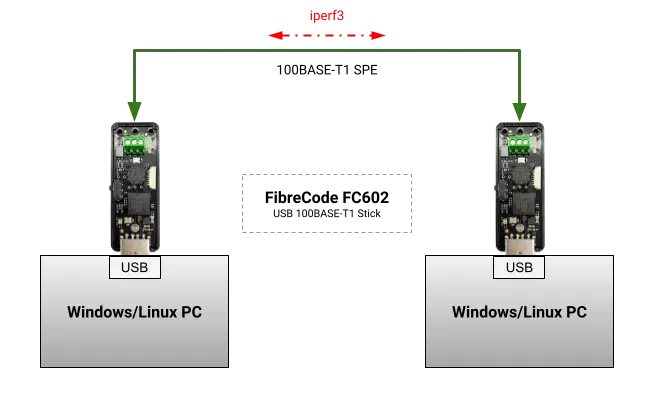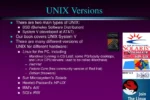Measuring Mac network performance with iPerf3 is an essential task for anyone looking to optimize their internet experience. iPerf3 is a powerful tool designed for macOS network testing, allowing users to accurately gauge bandwidth and throughput through simple terminal commands. To get started, one can easily install iPerf3 using Homebrew, a popular package manager for macOS, which simplifies the iPerf3 installation process. Once installed, you can run various iPerf3 commands to assess your network’s performance metrics effectively. Whether you’re troubleshooting connectivity issues or just curious about your network’s capabilities, using iPerf3 provides valuable insights into network performance measurement.
Assessing the performance of your Mac’s network connection can significantly enhance your online experience. By utilizing a tool like iPerf3, users can conduct comprehensive tests to evaluate bandwidth and throughput across various connections. This method of macOS network assessment not only helps in diagnosing issues but also in understanding the efficiency of your network setup. Installing iPerf3 via Homebrew is a straightforward process that opens the door to a range of terminal commands designed for effective network analysis. With iPerf3, whether you are an advanced user or a novice, you can easily navigate through network testing and gain a clearer picture of your Mac’s connectivity capabilities.
Understanding iPerf3: The Network Performance Measurement Tool
iPerf3 is an advanced network performance measurement tool that allows users to test the bandwidth and throughput of their network connections. It is widely recognized for its ability to provide detailed insights into network performance on macOS systems. Users can easily access iPerf3 through the macOS Terminal, making it a convenient choice for anyone looking to conduct comprehensive network testing. The tool is designed to operate in both client and server modes, ensuring that it can be utilized in a variety of testing scenarios.
Developed as a modern iteration of the original iPerf, iPerf3 incorporates many enhancements, including support for both TCP and UDP protocols. This flexibility allows users to analyze different aspects of their network’s performance, from bandwidth to latency. Whether you’re troubleshooting network issues or simply wanting to optimize your internet connection, iPerf3 stands out as a reliable solution for macOS network testing.
How to Install iPerf3 on macOS Using Homebrew
Installing iPerf3 on macOS is a straightforward process, especially when utilizing the Homebrew package manager. Homebrew simplifies the installation of software on macOS, allowing users to install iPerf3 with a single command in the Terminal. To begin, ensure that you have Homebrew installed on your system. Once Homebrew is ready, simply open the Terminal and execute the command: `brew install iperf3`. This command will automatically download and install all necessary dependencies required for iPerf3 to function correctly.
After the installation is complete, you can verify that iPerf3 has been installed successfully by checking its version with the command `iperf3 -v`. This step is crucial to ensure that you have the latest version, which may include important updates and features for network performance measurement. By using Homebrew to install iPerf3, users not only streamline the process but also gain access to additional Homebrew packages that can enhance their network testing capabilities.
Running iPerf3 Tests in Terminal: A Step-by-Step Guide
Once iPerf3 is installed, running tests to measure your Mac’s network performance is simple. The most basic command to initiate a test is `iperf3 -c remotehost`, where ‘remotehost’ is the IP address or hostname of the server you wish to connect to. This command sets iPerf3 to operate in client mode and initiates a connection to the server. It is essential for the server component of iPerf3 to be running in order to conduct these tests effectively.
For users interested in testing UDP performance instead of the default TCP, the command can be modified to include the `-u` option: `iperf3 -c -u remotehost`. This flexibility allows for a comprehensive analysis of your network’s capabilities, whether you are measuring TCP throughput or UDP performance. With various options available, users can customize their tests to gather specific metrics that matter most to their network environment.
Exploring iPerf3 Terminal Commands for Advanced Users
iPerf3 offers a plethora of command-line options that allow users to tailor their network performance tests to their specific needs. For instance, the `-p` option enables users to specify the port number for connections, while the `-i` option allows for setting the interval between reports. This granularity in control empowers advanced users to conduct detailed network tests and collect valuable performance data, making it easier to identify bottlenecks or issues.
Additionally, the `-B` option binds the test to a specific network interface, which can be incredibly useful in multi-network environments. For those requiring more verbose output, the `-V` flag can be included to provide detailed logs during the testing phase. The breadth of commands available with iPerf3 ensures that both casual users and network professionals can effectively measure and analyze their network performance.
Analyzing iPerf3 Output: Understanding Your Test Results
Upon completing a test with iPerf3, users are presented with detailed results in the Terminal. Each output line displays vital information such as the test interval, the amount of data transferred, and the overall throughput measured in Mbps. This real-time feedback is crucial for determining the efficiency of your network connection and can help identify any areas that require further optimization.
In cases where UDP testing is performed, the output will also include details on packet loss, providing insights into the reliability of the connection. By analyzing these results, users can make informed decisions about their network setup, whether it involves adjusting hardware, optimizing settings, or even changing service providers to improve overall performance.
iPerf3 vs. Previous Versions: Key Differences and Improvements
iPerf3 represents a significant advancement over its predecessors, particularly iPerf2. One of the main differences is its single-threaded architecture, which, while altering performance dynamics, allows for more accurate measurement of network throughput without the interference of multi-threading. This design choice enhances the tool’s reliability and provides users with a clearer picture of their network capabilities.
Moreover, iPerf3 introduces features such as JSON output, which facilitates easier data parsing and analysis compared to the traditional output formats of earlier versions. This focus on usability and performance measurement makes iPerf3 an essential tool for anyone serious about understanding their network performance, whether for personal use or professional network management.
Setting Up an iPerf3 Server: A Guide for Network Testing
To effectively utilize iPerf3, setting up a server is crucial for conducting tests. The command `iperf3 -s` initiates the server mode, allowing your Mac to listen for incoming client connections. For more control, you can run the server as a daemon using the `-D` flag, which enables it to operate in the background. This setup is ideal for scenarios where continuous monitoring or testing is required.
When configuring your iPerf3 server, you have the option to specify a custom port using the `-p` flag. This flexibility can enhance security by avoiding commonly targeted ports. Additionally, establishing an authorized users list can help control access to your server, ensuring that only designated users can connect and run tests. This level of control contributes to a more secure and efficient testing environment.
Best Practices for Network Performance Measurement with iPerf3
To achieve the most accurate results when measuring network performance with iPerf3, certain best practices should be followed. First, ensure that both the client and server are connected to the same network segment to minimize external factors that could skew results. Running tests at different times of the day can also provide insights into peak versus off-peak performance, allowing for a comprehensive understanding of your network’s behavior.
Furthermore, it’s advisable to conduct multiple tests and average the results for a more reliable measurement. Factors such as network congestion, background applications, and other variables can impact performance, so replicating tests under similar conditions can yield more consistent results. By following these best practices, users can ensure that their network performance measurements are both accurate and actionable.
Troubleshooting Common Issues with iPerf3
Despite its reliability, users may encounter issues while using iPerf3 for network performance testing. One common problem is connectivity errors, which can often be traced back to firewall settings or incorrect IP addresses. Ensuring that the server is running correctly and that the correct port is specified can help resolve these issues. Additionally, checking network configurations and permissions is crucial to maintaining a seamless testing experience.
Another issue users may experience is inconsistent test results, which can arise from network congestion or interference from other applications. To mitigate this, it’s essential to close unnecessary applications and ensure that the network is as clear as possible during testing. By proactively addressing these common issues, users can enhance their iPerf3 testing experience and obtain more reliable data about their network performance.
Frequently Asked Questions
How do I install iPerf3 to measure Mac network performance?
To install iPerf3 for measuring network performance on your Mac, you can use Homebrew. First, ensure Homebrew is installed on your macOS. Then, open the Terminal app and run the command `brew install iperf3`. This will install iPerf3 along with any necessary dependencies.
What are the basic iPerf3 terminal commands for macOS network testing?
The simplest command to test network performance using iPerf3 on macOS is `iperf3 -c remotehost`, where ‘remotehost’ is the IP address or hostname of the server. To run a UDP test, use `iperf3 -c -u remotehost`.
Can I run an iPerf3 server on my Mac for network performance measurement?
Yes, you can run an iPerf3 server on your Mac by using the command `iperf3 -s` in the Terminal. This will start the server, which listens for incoming connections on the default TCP port 5201.
How do I check the version of iPerf3 installed on macOS?
To check the installed version of iPerf3 on your Mac, open the Terminal and type `iperf3 -v`. This command will display the current version of iPerf3.
What options are available in iPerf3 for advanced network testing on macOS?
iPerf3 offers various options for advanced network testing, including `-p` (to specify the port number), `-f` (to set the format of speed labels), and `-i` (to define the interval in seconds between reports). For a complete list of options, run `man iperf3` in the Terminal.
What is the purpose of using iPerf3 in macOS network performance measurements?
iPerf3 is used to measure the bandwidth and throughput of your network connections on macOS. It helps in diagnosing network issues and optimizing performance by providing detailed metrics during tests.
Are there any specific configurations needed for iPerf3 when measuring network performance on macOS?
For optimal performance when using iPerf3, consider configuring your macOS network settings. You can use the `-B` option to bind to a specific network interface and the `-p` option to specify a non-default port for additional security.
What kind of results can I expect from an iPerf3 test on my Mac?
When you run an iPerf3 test on your Mac, you will receive detailed output in the Terminal that includes test intervals, amount of data transferred, and overall throughput. If using UDP, it will also show packet loss statistics.
Where can I find public iPerf3 servers for testing my Mac’s network performance?
You can find a list of public iPerf3 servers for testing by visiting the iPerf3 Server List online. These servers allow you to measure your Mac’s network performance against other locations.
What should I do if I encounter issues while using iPerf3 on macOS?
If you encounter issues with iPerf3 on macOS, check your network connections, ensure the server is running, and confirm that the correct commands are being used. You can also refer to the iPerf3 documentation or community forums for troubleshooting tips.
| Key Point | Details |
|---|---|
| What is iPerf3? | iPerf3 is a network throughput tool used for measuring performance, bandwidth, and throughput of networks. |
| History of iPerf | Originally developed at NCSA, iPerf has evolved through various versions, with iPerf3 being a fully compatible rewrite focusing on improved performance. |
| Installation on macOS | Install iPerf3 via Homebrew with the command: `brew install iperf3`. |
| How to Run iPerf3 | Use Terminal commands like `iperf3 -c remotehost` to test connectivity to a remote server. |
| Testing Protocols | iPerf3 supports TCP and UDP protocols for testing. |
| Key Features | Provides options for detailed testing such as specifying ports, formats, and logging. |
| Output Format | Outputs results in the Terminal, with options for JSON formatting for easier data handling. |
| Use Cases | Measure network performance, bandwidth, and even disk performance across different systems. |
Summary
To measure Mac network performance with iPerf3, users can easily install the tool using Homebrew and run simple commands in the Terminal to assess their network’s throughput and bandwidth. iPerf3’s capabilities to test both TCP and UDP protocols, alongside its detailed output options, make it a powerful tool for network diagnostics. By following the outlined steps and utilizing the various features of iPerf3, users can gain valuable insights into their network performance.










